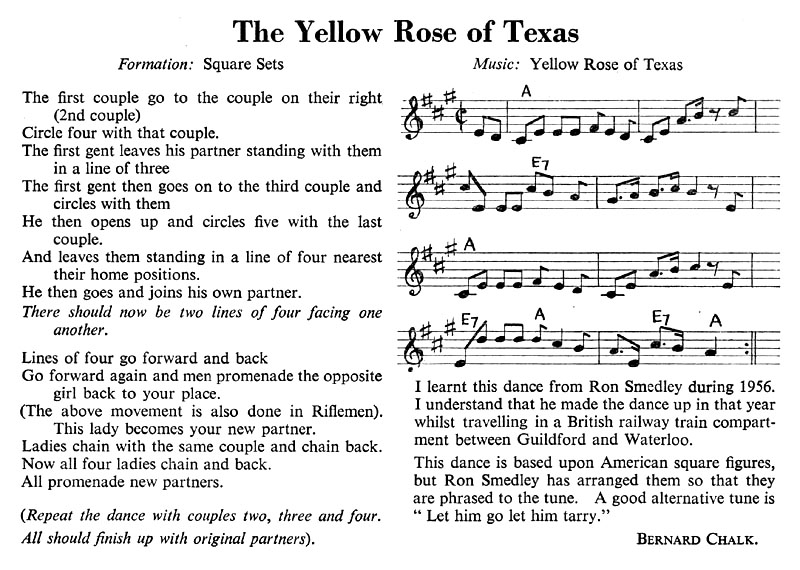Original page from English Dance & Song, December 1963

Back to Dance Index
| A1 |
#1s Lead Out to the Right, Circle Up Four
#1 Man leaves a Side Line of Three and goes on to #3s Circle Up Three; Pick up #4s with Left Hand |
| A2 |
Circle Up Five to a Side Line; #1 Man joins his Partner
Should now be in Side Lines, everyone near their Home |
| B1 |
Lines of Four Go Forward & Back
Pair Off: Go Forward again, turn your back to your Partner; take your Neighbour in a Promenade Hold Promenade back to the Man's side (still in Side Lines) - this is your new Partner |
| B2 | Ladies' Chain x2 across the Side Lines |
| C1 | All Four Ladies Chain Half Way x2 |
| C2 | Promenade to the Man's Home |

I'd love to hear from you if you know anything more about this dance, its composer, its style, or its history.
Feedback is very welcome on any aspect of these dances or Web pages.
Please contact John Sweeney with your comments.
